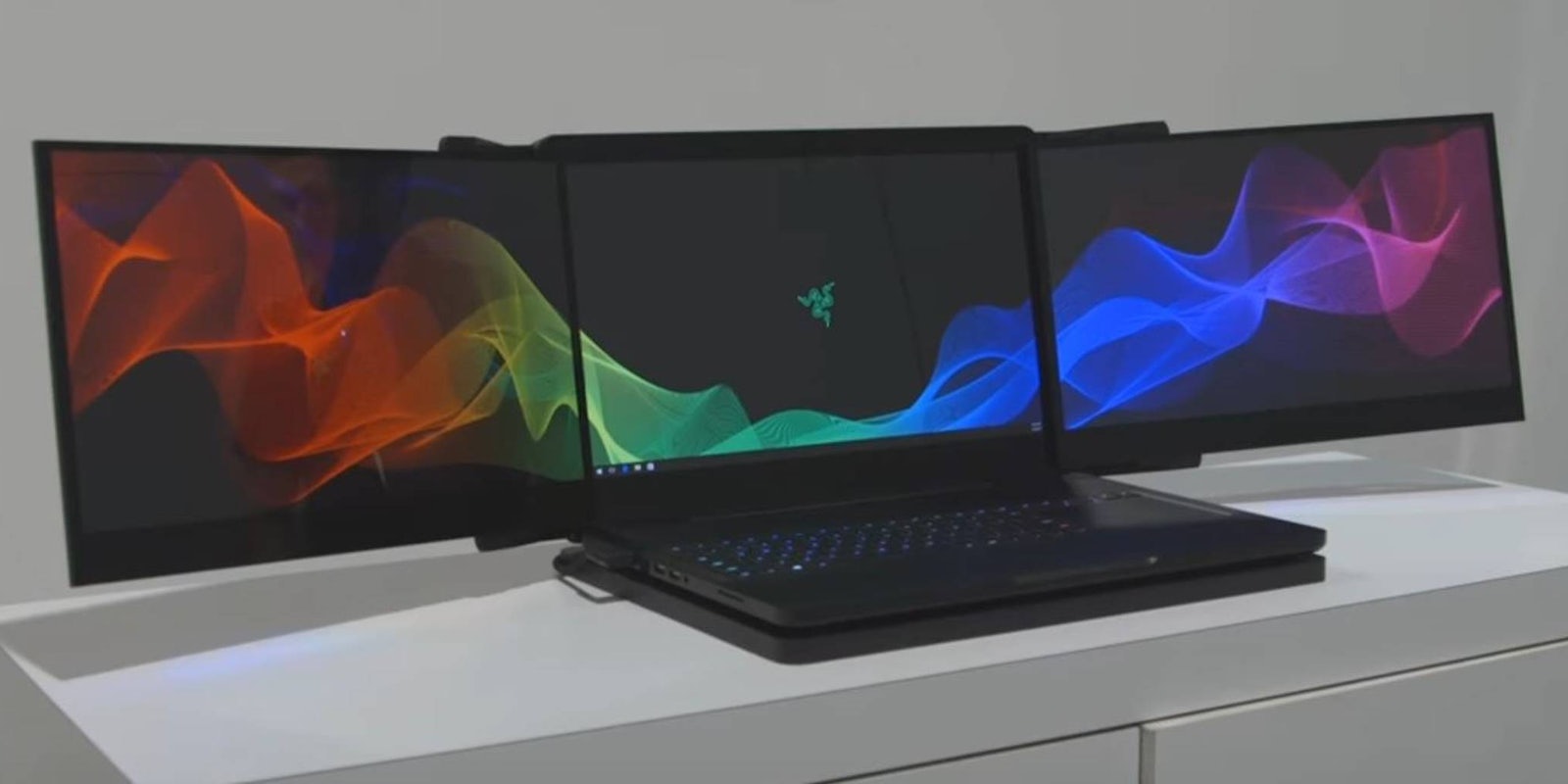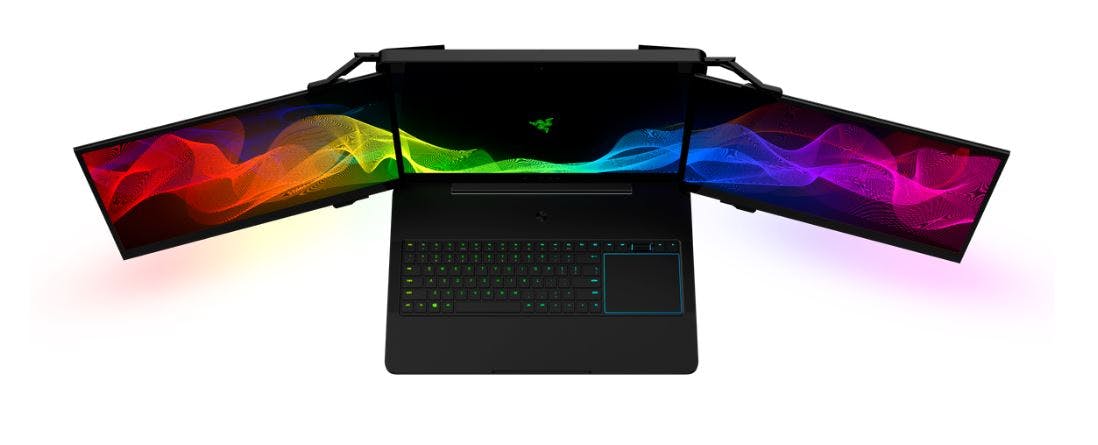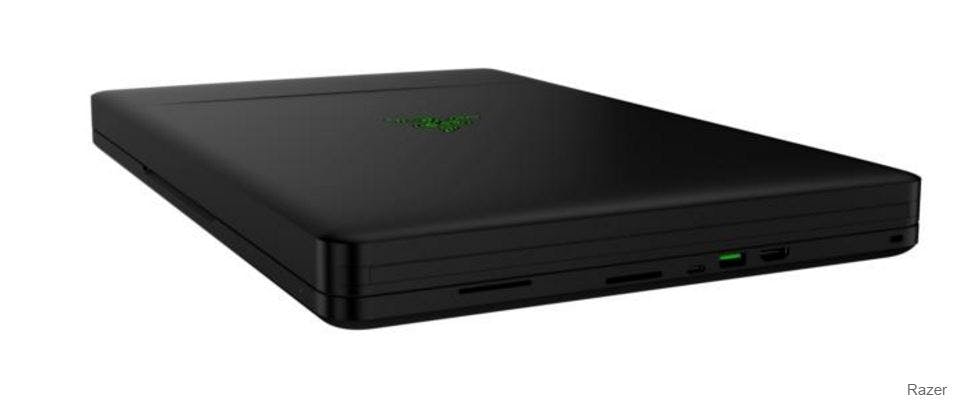You’ve probably seen gamers playing on three monitors simultaneously, but what about on a laptop with three displays?
Razer’s Project Valerie, announced at CES, is a gaming PC with three 17-inch 4K displays. Yes, a single personal computer with three full-sized screens.
Razer is well known in the gaming community for its peripherals and impressively portable gaming PCs. But the company’s latest prototype is a radical departure from thin and light, and a step into the unknown territory of multi-screen “laptops.”
How does Razer pull off the magic? By doing what you’d probably have guessed: creating a really thick and heavy laptop with two foldable displays. The two complementary displays retract into slots behind the main display, and slide out when deployed, automatically positioning and aligning themselves with the main screen. This is all achieved with a pair of mechanical hinges.
All three 17.3-inch displays feature 4K resolution, and come with the same gaming-optimized technology as the company’s flagship Blade Pro. In fact, the radical PC is similar to the Pro in a number of ways, also equipped with Nvidia’s beastly GTX 1080 graphics, and Razer’s in-house mechanical keyboard with Chroma lighting.
The laptop weighs 10 to 12 pounds and is 1.5 inches thick, figures we haven’t seen in years.
This is surprisingly not the first laptop with more than one display. The folks at PCWorld dug into their archives and rediscovered the 2011 Lenovo ThinkPad W700ds, a gaming PC with a 17-inch screen and an auxiliary 10.6-inch display.
Razer has not provided battery life estimates for the Valerie, though it is hard to even imagine it running without being plugged in. The company has also not detailed pricing, but given the single-display Blade Pro starts at well over $3,000… Well, just convince yourself you’re pulling out money for a car.
H/T PCWorld


